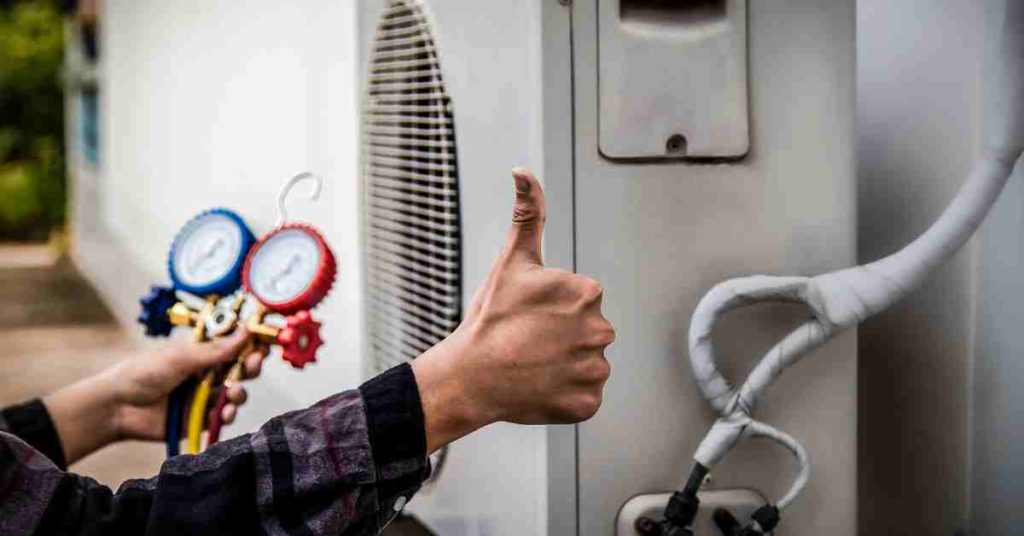Your home, a sanctuary of comfort, requires an HVAC strategy that adapts to the ever-changing seasons.

In this detailed guide, we embark on a journey through the intricate dance of Heating, Ventilation, and Air Conditioning (HVAC), providing homeowners with comprehensive insights to turn their living spaces into havens of efficiency and comfort, irrespective of the external elements.
Spring: Preparing for the Transition
As the world outside awakens in spring, it’s time to revitalize your HVAC system. Transitioning from heating to cooling necessitates meticulous preparation. Begin with a ritual of replacing air filters – a small yet profound act that kickstarts the system’s efficiency. Clear the area around the outdoor unit, ensuring unimpeded airflow. Consider a professional inspection to unearth potential issues and guarantee a seamless transition into the warmer months.
Tip: Take control by installing a programmable thermostat, granting precise temperature management and optimizing energy consumption.
Summer: Staying Cool Without Breaking the Bank

The relentless summer heat demands peak performance from your air conditioning system. Regular maintenance becomes the linchpin. Keep the unit pristine, free from debris. Regularly change or clean filters to bolster airflow and reduce the load on your system. Thoughtful landscaping – providing shade to the outdoor unit – can trim energy consumption. Harness the power of strategically placed fans to circulate air effectively.
Tip: Ease the strain on your cooling system by utilizing fans strategically, creating a perceptible temperature drop without incessantly adjusting the thermostat.
Fall: Transitioning Gradually
As temperatures gracefully decline, your HVAC strategy should shift accordingly. The focus now turns to your heating system. Ensure vents are unobstructed, and schedule professional servicing for your furnace. Sealing drafts and fortifying insulation become paramount to retaining warmth and energy efficiency. A proactive fall approach sets the stage for a cozy and cost-effective winter.
Tip: Leverage the reversible feature of ceiling fans to circulate warm air downward, ensuring an even distribution of heat.
Winter: Cozy Comfort and Energy Efficiency

Winter introduces a unique set of challenges, demanding a reliable and efficient heating system. Prioritize sealing gaps around doors and windows to prevent heat loss. Invest in thermal curtains to enhance insulation. Regular maintenance of your heating system is imperative for efficiency. For those open to innovation, smart thermostats offer convenient temperature management, even when you’re away.
Tip: Harness natural sunlight by keeping curtains open during daylight hours, allowing sunlight to naturally warm your living spaces.
Maximizing HVAC Efficiency: A Comprehensive Guide
Achieving optimal efficiency in your Heating, Ventilation, and Air Conditioning (HVAC) system is not just a pursuit of cost savings; it’s a commitment to comfort and sustainability. This detailed guide explores a spectrum of strategies to elevate your HVAC system’s performance, ensuring a balance between functionality, energy conservation, and overall well-being.
1. Regular Maintenance: The Foundation of Efficiency
Scheduled maintenance is the cornerstone of HVAC efficiency. Regularly replace or clean air filters to enhance airflow and system longevity. Clear debris around outdoor units, ensuring unobstructed air circulation. Professional inspections, ideally conducted twice a year, uncover potential issues before they escalate, optimizing system performance
Tip: Enroll in a maintenance program with your HVAC provider for hassle-free, routine check-ups.
2. Smart Thermostats: Precision in Temperature Management

Invest in a smart thermostat to exert precise control over your home’s temperature. These devices learn your habits, adapting heating and cooling patterns accordingly. Remote access allows adjustments on the go, ensuring your HVAC system operates efficiently even when you’re away.
Tip: Program your thermostat to adjust temperatures based on your daily routine, lowering energy consumption during periods of inactivity.
3. Sealing Ductwork: Preventing Energy Loss
Ducts, if not properly sealed, can result in significant energy loss. Inspect ductwork for leaks and seal them promptly. Proper insulation reduces heat transfer, enabling your HVAC system to function more efficiently. Consider professional duct cleaning to remove accumulated debris that obstructs airflow.
Tip: Use mastic sealant or metal tape to seal any visible gaps or leaks in your ductwork.
4. Upgrade Insulation: The Barrier Against Temperature Extremes

Effective insulation is a shield against temperature extremes, reducing the workload on your HVAC system. Evaluate and, if necessary, upgrade insulation in key areas like the attic, walls, and floors. Weatherstripping doors and windows prevents drafts, enhancing indoor comfort.
Tip: Conduct an energy audit to identify specific areas for insulation improvement.
5. Energy-Efficient HVAC Systems: A Worthy Investment
Consider upgrading to an energy-efficient HVAC system if your current unit is outdated. Newer models boast advanced technologies, often accompanied by higher Seasonal Energy Efficiency Ratio (SEER) ratings for air conditioners and Annual Fuel Utilization Efficiency (AFUE) ratings for furnaces. While the initial investment may seem significant, the long-term energy savings make it a wise choice.
Tip: Look for systems with ENERGY STAR certification for guaranteed efficiency.
6. Utilize Zoning Systems: Tailoring Comfort to Spaces
Zoning systems divide your home into distinct comfort zones, each with individual temperature controls. This allows for personalized heating and cooling in different areas, eliminating the need to condition the entire home uniformly. Zoning not only enhances comfort but also conserves energy.
Tip: Optimize zoning based on room usage patterns, directing conditioned air where and when it’s needed most.
7. Harness Natural Ventilation: A Sustainable Approach
Strategic use of natural ventilation can alleviate the burden on your HVAC system. During mild weather, open windows to allow fresh air circulation. Utilize window coverings to regulate sunlight, minimizing the need for artificial lighting and reducing heat gain.
Tip: Install window sensors connected to your HVAC system for automated adjustments based on outdoor conditions.
Conclusion: Elevating Your Home’s HVAC Game A meticulously maintained HVAC system forms the bedrock of a truly comfortable home. Implementing these seasonal tips transcends immediate comfort; it’s an investment in long-term efficiency and cost savings. Proactive care, tailored to each season, not only enhances your quality of life but also contributes to a sustainable and cost-effective living environment. Here’s to a home that’s not just comfortably cozy but also efficiently climate-controlled throughout the seasons.





